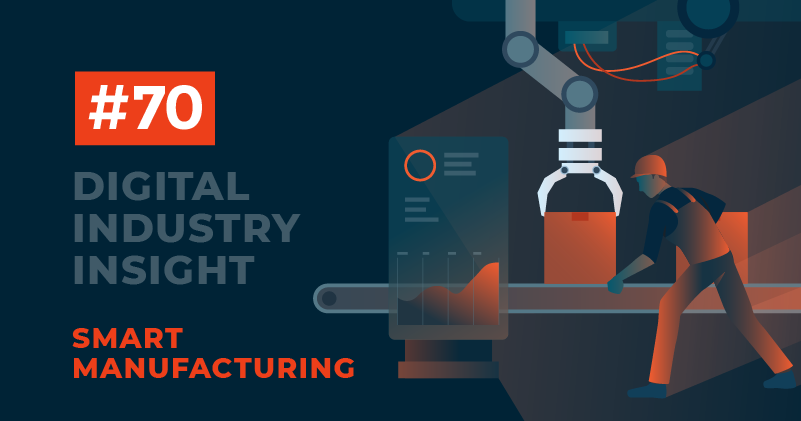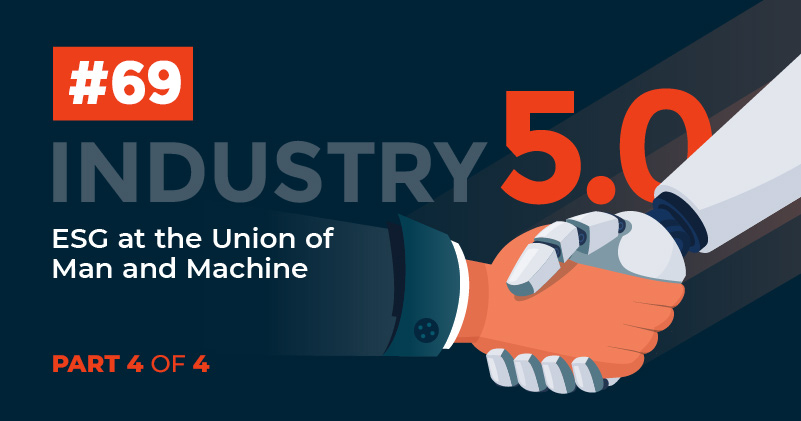Value Vector
Your Next Colleague Might Be a Robot
Sandra Mueller

For the last few years we've been told that robots will take our jobs, with technology embedded machines that are inserting themselves into industries including the burger flipping robot, customer service greeting robots and those farming the land.
Robots have been used in manufacturing for decades to speed production, enhance accuracy and replace human labor. Yet, they're not entirely taking over. There are still plenty of tasks that robots can't do - without the help of a human. Enter the cobots. Cobots or more specifically collaborative robots are "complex machines which work hand in hand with human beings. In a shared work process, they support and relieve the human operator.'' They were invented and patented in 1999 by Ed Colgate and Michael Peshkin, professors of mechanical engineering. This article takes a look at the use of robots in Connected Industry, addressing some of their challenges and benefits.
Cobots have been called the fastest growing segment in automation with two companies Rethink Robotics and Universal Robots most frequently name-checked. But it's only been in the last decade that they've really come into their own and their functionality has been largely overlooking by futurists in the hysteria we've all been reading about robots and automation taking our jobs. You've probably seen cobots when visiting IoT conferences with their arms almost waving during demos.
Before their creation, robots in factories were typically large, caged devices that perform repetitive, dangerous work in lieu of humans. As hardware has gotten cheaper and smaller, more dexterous robots have come onto the factory floor. These lighter weight, lower cost robots can be outfitted with sensors that allow them to work collaboratively alongside humans in industrial settings, creating “cobots” — robots that can perform tasks like gripping small objects, seeing, and even learning to tackle “edge cases.”

Take Rethink Robotics’ Sawyer cobot (pictured above) With 7 degrees of freedom and a 1260 mm maximum reach, Sawyer fits into a variety of work cells – even ones already designed for people. It can maneuver into tight spaces, and around fixtures and doors, much like a human arm.
Nelipak Healthcare Packaging implemented Sawyer to assist with loading trays and lidding to their heat tray sealer. It can pick up several products at once while human operators carry out tasks that are more complex and harder to automate. Interestingly, Sawyer has a screen with eyes to make it more approachable and encourage human co-workers to be comfortable working with it (Surely that's a whole article in itself!).
According to CB Insights, rising labor costs worldwide are increasing demand for cobots. This is particularly apparent in agriculture, manufacturing, and construction where there are no willing workers to overtake those retiring. Estimates say that roughly 22% of skilled manufacturing laborers in the US (or 2.7M workers) are set to retire in the next decade — and the industry will be about 2 million workers short if trends continue. They're certainly not limited to the factory floor, with the introduction of Flippy, the burger-making robot in hospitality, and Abundant Robots' apple picking robot.
Cobots Are Only as Safe as Their Master
Sensor technology helps ensure their safe use: force feedback sensors enable the cobot to identify when it comes into contact with an object or person, reducing its impact to avoid even the possibility of injury. They also move slowly and predictably, and future sensor tech will enable them to see what’s around them, noticing a human co-worker and adjusting what they’re doing to improve safety.
That said, it's not all peace and harmony. Last year Trend Micro security researchers released research showing how easily factory and industrial robots could be hacked and used for malicious purposes. Industrial robots are mechanical multi-axis “arms” used in modern industries for automating operations such as welding, packaging, food processing or die casting. They consequently play a key role in Industry 4.0 initiatives focused on automation and smart factories. Many robots from manufacturers including Kawasaki, Fanuc and Yaskawa were found to vulnerable to enabling hackers to make changes that alter the way they operate. The researchers explained:
"By leveraging the remote code execution vulnerability, we modified the control loop configuration files, which are naively obfuscated and thus easily modifiable. In particular, we changed the proportional gain of the first joint’s PID controller, setting it to 50% of its original value. Then we programmed the robot to perform a straight horizontal movement. The trajectory of the end effector projected on the horizontal plane was notably altered. Although the maximum difference between the position under normal conditions and under attack is small (less than 2mm), according to the specific machining that the robot is performing, it can be enough to destroy the workpiece."
Beyond simply altering machines, researchers were also able to inject faults and micro-defects into the workpiece with the potential to control a robot, damage its parts or even cause injuries to people who work in close collaboration with it by disabling or substantially altering safety devices. Additionally, the Trend Micro Forward-Looking Threat Research Team found tens of thousands of industrial devices residing on public IP addresses which could include exposed industrial robots, further increasing the risk that an attacker can access and hack them. Trend Micro duly contacted manufacturers in response to its findings.
It's also worth noting that mistakes happen without human malice. 24 workers were hospitalized in early December this year after one of Amazon's automated robots punctured a nine-ounce can of bear repellent spray, exposing employees to the concentrated form of Capsaicin released in the air.
Cobots and Moratov's Paradox
Hans Moravec, a renowned roboticist, sums up perhaps the biggest challenge of robotics, known as Moravec’s Law: “It is comparatively easy to make computers exhibit adult level performance on intelligence tests or playing checkers, and difficult or impossible to give them the skills of a one-year-old when it comes to perception and mobility”.
It's further worth noting that at present cobot tasks focus on the dull, dirty and dangerous - at least until robotic hand dexterity improves. Linguist and cognitive scientist, Stephen Pinker notes in The Language Instinct:
"The main lesson of thirty-five years of AI research is that the hard problems are easy and the easy problems are hard. The mental abilities of a four-year-old that we take for granted – recognizing a face, lifting a pencil, walking across a room, answering a question – in fact solve some of the hardest engineering problems ever conceived... As the new generation of intelligent devices appears, it will be the stock analysts and petrochemical engineers and parole board members who are in danger of being replaced by machines. The gardeners, receptionists, and cooks are secure in their jobs for decades to come..."
 Drowning in hype cycles and statistics about IoT, blockchain and Connected Industry? Momenta Partners takes a fresh look at the challenges confronting industry through a series of thought pieces: podcasts, webinars, blog posts and whitepapers. Learn how our industry insights can help grow your business.
Drowning in hype cycles and statistics about IoT, blockchain and Connected Industry? Momenta Partners takes a fresh look at the challenges confronting industry through a series of thought pieces: podcasts, webinars, blog posts and whitepapers. Learn how our industry insights can help grow your business.



